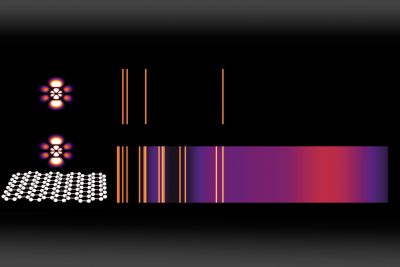
Nicholas Rivera, Ido Kaminer, Bo Zhen, John D. Joannopoulos and Marin Soljacic
doi: 10.1126/science.aaf6308
Abstract:
The diversity of light-matter interactions accessible to a system is limited by the small size of an atom relative to the wavelength of the light it emits, as well as by the small value of the fine-structure constant. We developed a general theory of light-matter interactions with two-dimensional systems supporting plasmons. These plasmons effectively make the fine-structure constant larger and bridge the size gap between atom and light. This theory reveals that conventionally forbidden light-matter interactions—such as extremely high-order multipolar transitions, two-plasmon spontaneous emission, and singlet-triplet phosphorescence processes—can occur on very short time scales comparable to those of conventionally fast transitions. Our findings may lead to new platforms for spectroscopy, sensing, and broadband light generation, a potential testing ground for quantum electrodynamics (QED) in the ultrastrong coupling regime, and the ability to take advantage of the full electronic spectrum of an emitter.
